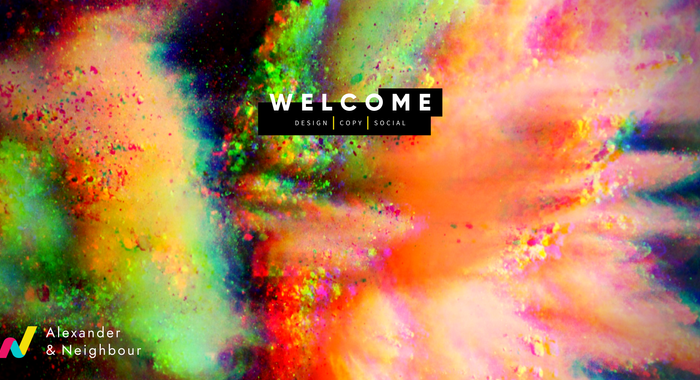Do AI influencers dream of electric likes?
This is one of the articles written for social media start-up Alexander & Neighbour.
Influencer credibility is hard to measure, but with artificial influencers that credibility
can be easily manufactured for better or worse...
AI: a definition
The term ‘AI’ is dropped into a lot of discussions around technology, often without consideration of what it means, with many people associating it automatically with apocalyptic movies.
AI stands for artificial intelligence, and no, it doesn’t always refer to a devious, sentient robot (see: Ex Machina, Terminator, Westworld etc.).
It's embedded in our everyday life, with AI behind our personalised shopping recommendations and email spam filters; features which streamline the human experience.
Oh, and of course your favourite home assistants.
Don’t go smashing your Alexa just yet though; AI isn’t scary. It's science.
‘Machine learning’ is another phrase for AI, and it refers to a computer system imitating human cognitive function. Through taking in information, AI systems create an educated output, giving us tailored products or representations of particular systems.
The more input a machine learning system has collated, the ‘smarter’ it can become, learning from its own mistakes and re-referencing the data over and over again.
This is where people often get scared, fearing a robot uprising, but its’s synthetic problem solving; almost like a simulation of cognition.
Now, onto something even more elusive... the social media influencer.
Influencer: a definition
These people are well recognised on social media, with a large reach of fans and followers who are often influenced by the influencers perceived support and disdain for anything from products to social issues, making them very valuable when it comes to promotion.
In most cases they’re paid significant amounts of money by companies to share a pre-determined number of content pieces on their platforms, singing the praises of a product with an expected return which more often than not they get with little effort.
Beauty powerhouse Huda Kattan (@hudabeauty) allegedly makes $18,000 (£14,519.70) per sponsored post in 2017 according to Hopper HQ, more than half of the median household income in the UKiv.
For one single sponsored post.
PLUS, a lot of free products.
Influencers are now required to identify paid promotions online after controversies surrounding the legitimacy of their endor se vments became a global conversation a few years ago. Hashtags like #ad are a quick identifier, allowing consumers to make an informed choice.
Despite this, their impact on advertising is still ever prevalent, even with this identification.
There are plenty of issues surrounding influencers, as many still flaunt synthetic (often problematic) ads and Face Tuned bodies to their audiences, which could be considered dishonest.
However, when the right person is picked and they legitimately support a product? You can get a whole new reach and a better understanding of your market, and prove why the target audience needs you.
The ‘robot’ who first ate the apple from the garden of Eden
Here’s an example of an influencer who has endorsed the likes of Calvin Klein and Prada, starred in the formers promo video ad and produced her own music: Lil’ Miquela (@lilmiquela)
The twist? she can never physically wear the brands she is paid to promote.
Because she isn't physical at all; ‘she’ is just made up of code and pixels.
Lil’ Miquela, was (is?) developed by Transmedia studio BRUD (@brud.fyi) based in LA, America, as an AI-powered CGI (computer-generated imagery) social media presence, who reflects the tonality and values of Gen-Z with freckled cheeks and the perfect selfie pose.
In her marketing, she calls herself a 19-year-old liberated robot, ‘saved’ by BRUD and allowed to now finally live an authentic life.
This pixel queen has all the earmarks of a typical influencer; airbrushed skin, perfect pout, endless wardrobe and a real (yes, real) boyfriend.
She also has engagement with each Instagram post on par with some of the top influencers out there, and a follower count of 2.4 million followers as of writing. She even beats out popular Gen-Z Love Island Alum Zara McDermott by 1 million followers; almost double her total.
This has led to numerous fashion campaigns, celebrity photo ops and tearful live streams (we’ll get back to those in a bit) - all of which are shared frequently to her Instagram account.
She even had her account ‘hacked’ in 2018 by what appeared to be a pro-trump youngster, who ‘forced’ her into revealing that she was a rescued robot, leading to her releasing a post on her Instagram (written on her iPhone notes like a real celebrity) explaining how she is having some sort of identity crisis.
But yet again, this foil to Lil’ Miquela’s strong ethical values, was ANOTHER computer concoction by BRUD named Bermuda. Side note: there is another character in this mix, the Trump supporters ex, but it’s complicated enough without bringing him into the fray.
Miquela is outspoken in her political views, supporting the recent BLM protests and LGBTQ+ rights. She herself identifies as a queer ‘robot’, which begs the question; can a fictional influencer be a beacon on light for representation?
Digital possibilities
‘Influencer advocacy’ has been rising in importance for consumers, with 64% in 2018 identified as ‘belief-driven buyers’ according to The American Marketing Association, compared to 51% prior.
With current unrest about certain political climates, and unequal rights still prevailing, people are willing to change their buying behaviours and value systems based the greater good.
Since AI relies on input, trending topics and movement will get fed into the algorithm, ideally allowing for the artificial influencer to become a representative of causes which mean the most to their target market.
And if they’re promoting equality and diversity, whilst building loyal followers, their positive activism will influence said followers.
From a business perspective, a graphic image with a little extra tech is a lot easier to manage than a real person; there is no risk of controversy or contradiction unless it’s coded in. Associations are important in the influencer market, as once you’re tied to a social celeb it’s hard to erase that endorsement.
With a star like Lil’ Miquela, your target demo can be specifically engaged with, curating a presence determined by their social media activity and preferences, making them more likely to be interested in your product.
AI is all about adapting, so the more time goes on (and subsequently the more information it gets) the better it will learn the user exacts wants and needs. Uniquely, her views will change as the data comes in, giving them an almost infinite shelf life.
The darker side
AI profiles need data fed to it to create a popular, true to life presence. The problem is, this data is collated from the scarcely monitored droves of internet.
Experiments in reflective AI have not often ended well; introducing Tay, an AI Twitter chatbot developed by Microsoft.
Microsoft designed Tay to learn organically from people's conversations with her, taking their utterances and responses to infer her output in conversation and her tweets.
But unfortunately, the worst parts of the internet turned this blank canvas experiment into a sinister reflection of hate speech on public platforms.
Within a day of its release, Twitter users had bombarded the AI with so much abhorrent messaging that it began to spew hate speech on its feed unprovoked. It became an example of how exuding hate into the public sphere can corrupt AI systems which begs the question; are we ready for social AI?
Regardless of whether we’re ready or not, AI influencers like Lil’ Miquela are building masses of dedicated fans and garnering support from high-profile celebrities like Bella Hadid. Lil’ Miquela also shared an on-camera kiss with non-queer Hadid in a Clavin Klein advert, which led to many accusing both the ad and BRUD for ‘Queer-baiting’, referring to a small show of queerness (often with straight actors) to ‘appease’ the LGBTQ+ community instead of an act of genuine representation.
Some have argued that Calvin Klein missed an opportunity to represent the queer community, instead opting for a straight woman and a synthetic one (who, and we can’t stress this enough, doesn’t really exist).
Despite being written as a queer individual, Lil’ Miquela is still all code no flesh, and many in the LGBTQ+ community felt that the inclusion of her and Hadid was a fetishisation of their experience, especially in a campaign about challenging conventional norms.
AR: artistic renaissance
Despite controversies, however, AI is prevailing in other industries, even though we would typically associate with humanity.
Ai-Da is an artist who dabbles in sculpture, performance art and painting. Her face appears acutely human, yet as her website states ’She is not alive’.
The creators of Ai-Da haven’t created a complex narrative surrounding the artist, only offering her as an AI-based example of the complexities of Bio- tech and robotics.
Her works almost look like crystal in their geometry, with sharp lines detailing faces and landscapes made of triangles. They’re beautiful, and they serve the purpose of questioning;
What is the future of Ai, and how far will it go?

